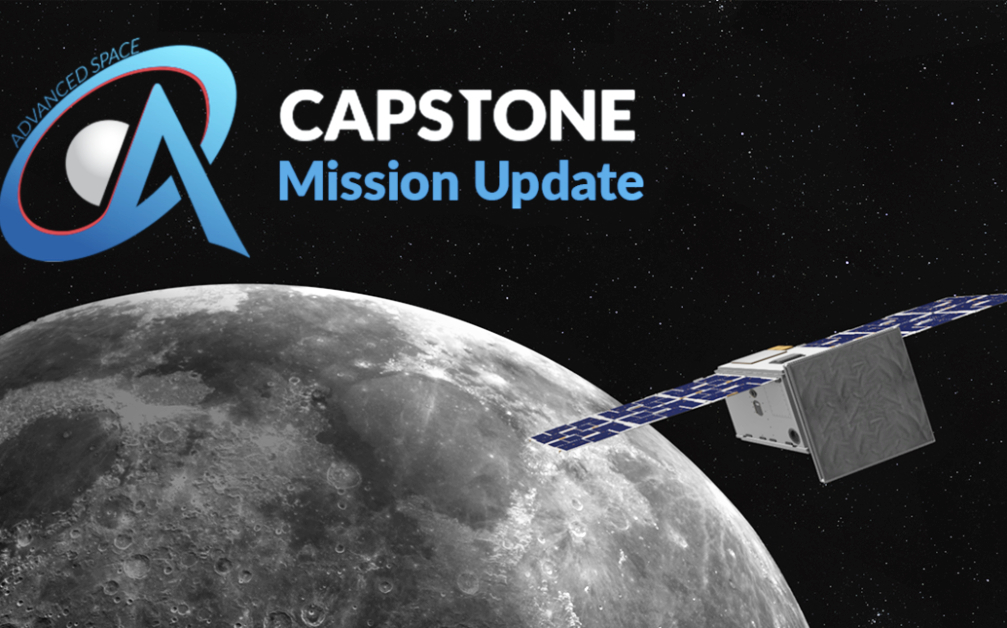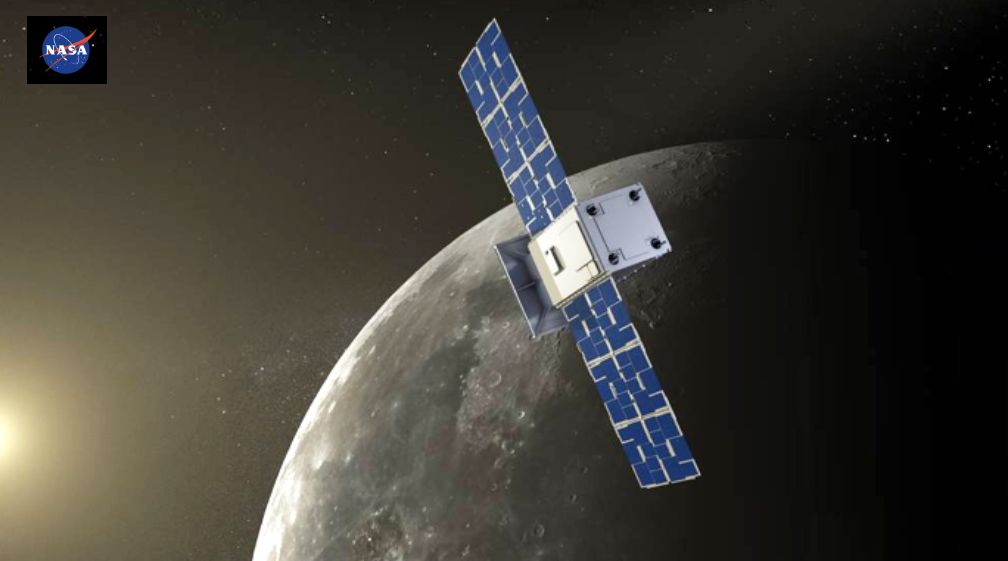
Advanced Space has successfully completed the six-month primary mission for CAPSTONE, the first commercial satellite to operate at the Moon.

The CAPSTONE mission’s objective is to pioneer a new and challenging lunar orbit – the Near Rectilinear Halo Orbit (NRHO) – to help inform future operations for the Gateway lunar space station that will support NASA’s Artemis missions. CAPSTONE has operated in the NRHO for six months, following its second correction maneuver after orbit insertion.
Since entering the NRHO six months ago, the CAPSTONE mission has achieved the following accomplishments…
- 28 successful orbits
- 7 maneuvers
- 89 published orbit determination navigation solutions
- Collected more than 315,000 measurements from the Deep Space Network including the site at Morehead State University. CAPSTONE was the first mission to use Morehead State University – this capacity added to DSN was critical to support the mission.
- Endured 6 lunar eclipses with a maximum duration of 74.32 minutes
- As designed, zero Earth eclipses
CrossLink Communications
In addition to the milestones and objectives outlined above, Advanced Space successfully demo’d the Cislunar Autonomous Positioning System (CAPS) that collected crosslink measurements between CAPSTONE and the Lunar Reconnaissance Orbiter (LRO) on May 9th. This milestone was met after two years of collaboration between Advanced Space and the LRO Team.

During this demonstration, the CAPSTONE spacecraft sent a specialized signal to LRO, which returned the signal and allowed CAPSTONE to calculate range and Doppler measurements. This was a primary objective for the mission which sought to showcase Advanced Space’s autonomous onboard navigation solution, CAPS. Using the gathered data, the team will look to improve subsequent crosslink demonstrations and continue to work towards demonstrating operational feasibility. In the future, additional data types will be demonstrated and incorporated into CAPS to deliver navigation knowledge to users in orbit and on the surface of the Moon.
Lunar Imagery
As an addition to the mission objectives, the CAPSTONE spacecraft was designed with an imager on board. This imager was included to support technology demonstration as well as public awareness objectives. As part of the Primary Mission, the Advanced Space team was able to capture the attached image of the lunar surface on the 3rd of May 2023 at 15:11 UTC. At this time, the spacecraft was near its perilune—the spacecraft’s closest approach to the Moon—which occurs approximately above the Moon’s North pole. The center of this image is approximately located at 25° N, 85° E on the lunar surface.
Upcoming Milestones
While the Primary Mission witnessed several significant milestones, the CAPSTONE mission is not complete. The mission team, led by Advanced Space, is now planning and preparing to execute the “Enhanced Mission” phase that will see the CAPSTONE spacecraft remain in the NRHO for up to 12 months, continuing to demonstrate critical technologies that will support future missions to the Moon.
Continued operations are planned during the Enhanced Mission phase with specific emphasis on further demonstrating additional collections for crosslink measurements and one-way uplink measurements from the Earth. The Enhanced Mission will also emphasize increasing efficiency and automation by the flight dynamics system as a precursor to multi-mission support in the future. Extended mission plans will be considered beyond this next mission phase if the spacecraft continues to weather the conditions posed by the lunar radiation and thermal environments.
“We’re extremely proud that the CAPSTONE mission has reached its primary mission milestone. Navigating to the Moon and in the NRHO has presented a lot of challenges that the mission teams at Advanced Space and Terran Orbital have had to overcome. We’ve been able to share valuable insights with NASA who continues to be supportive and instrumental in our success. Seeing the CAPS technology successfully executed is also an incredible achievement for the team and is the culmination of nearly 6 years of hard work at Advanced Space. We thank LRO for their support as we’ll continue to perform and learn from these demonstrations.”
— Alec Forsman, Mission Operations Manager for CAPSTONE at Advanced Space
“As the first U.S. commercial mission to the Moon and the first spacecraft to operate in this unique orbit, CAPSTONE is helping inform future lunar exploration operations for the Artemis program. Importantly, the mission also is pushing the boundaries of what we can do with small spacecraft and how new technologies and commercial capabilities can support missions to the Moon and beyond.”
— Christopher Baker, program executive for the Small Spacecraft Technology program in NASA’s Space Technology Mission Directorate
“We are very grateful to NASA, our mission partners and everyone who has supported us through this journey. The development of CAPS started as an SBIR back in 2017 and has now evolved into a significant historical development in space exploration. We look forward to ongoing operations of the spacecraft at the Moon and future missions it will support.”
— Bradley Cheetham, Advanced Space CEO and President
